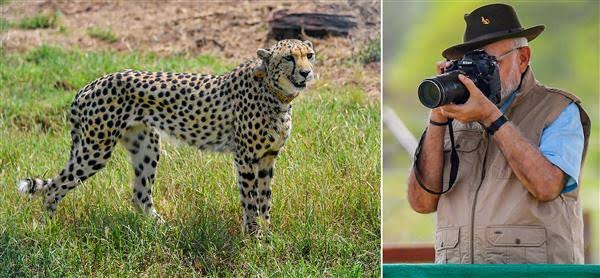On their birthday, Prime Minister Narendra Modi released three of eight Cheetahs in Madhya Pradesh’s Kuno National Park. The species was declared extinct in 1952 by the government of India. Cheetahs are currently standing at the vulnerable stage of extinction. After almost eight decades, an initiative has been taken by PM Modi to regain back the extinct species under the name of ‘Project Cheetah.’ The release of the Cheetahs might help India to regain its lost biodiversity. Cheetahs are already on the brink of extinction and have faced extinction two times in the past.
Here are the eight facts about Cheetahs
• Globally, the reintroduction of cheetahs in the Subcontinent landscape is expected to be the first-ever inter-continental translocation. The reintroduction of Cheetahs might revive the lost species.
• All of these eight Cheetahs were given to India by Namibia. Though African cheetahs never inherited the Indian land, they’re either domesticated or imported from Africa and Iran. It was the Mughal Empire that brought Cheetahs to India.
• Before the extinction, Asiatic-Cheetahs flourished in the region of India, Israel, Iran, and Afghanistan but later, at the beginning of the twentieth century, over-exploitation and overhunting led to the extinction of the species. The last three cheetahs in India were hunted by Maharaja Ramanuj Pratap Singh Deo, king of Koriya (Chhattisgarh), back in 1947.
• An international nonprofit organization named Cheetah Conservation Fund (CCF), headquartered in Namibia, which is responsible for conserving Cheetahs in the wild, stated that two female cheetahs aged between two and five years and three male cheetahs aged around 4.5 to 5.5 years released in India.
• A specially customized B747 jumbo jet equipped with modified cages is used in the project. The nose of the B747 is painted with the image of a tiger, which signifies the importance of the tigers.
• Eight of the three Cheetahs are released in Kuno National Park, and the other Five are expected to be released in Nauradehi Wildlife Sanctuary, MP, and Shahgarh bulge landscape in Jaisalmer, Rajasthan.
• The Union Minister for Environment launched an action plan named “Action Plan for Introduction of Cheetah in India” under this project, fifty of these cats would be released in India in the upcoming five years. In the initial phase of establishing a new cheetah population, twelve to fourteen cheetahs would be imported and released into the wild.
• All these cheetahs are at reproductive age for multiplying their growth. Before releasing GSM-GPS-VHF radio collars, they are tied around their necks to monitor their behaviour. Eight dedicated teams are formed for each cheetah.







